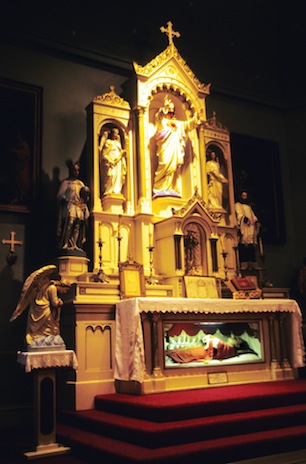
THE SHRINE OF FERDINAND & SACRED HEART ACADEMY

Her parents wanted their daughter to marry, but at the age of 18 she entered the convent. After the French Revolution, she met Madeleine Sophie Barat, who had founded the Society of the Sacred Heart. Philippine became a member of the new order and a vital aide to Mother Barat.
Philippine’s overwhelming desire, however, was to go to America. When she was a teenager she had heard a priest speak about his experiences working with the Indians in the Mississippi River Valley. Then in 1816, William DuBourg came to France, emphasizing the need for missionaries. DuBourg would become the first bishop of the Diocese of Louisiana. Philippine begged Mother Barat for permission to go. It took two years for permission to be granted.
Accompanied by four other nuns, Philippine left France in March of 1818, sailing aboard the Rebecca. Upon landing in New Orleans, they were sent by Bishop DuBourg to “the most distant village in the United States,” as Philippine described it in a letter home. The village was St. Charles, Missouri. Philippine was 49 when she arrived.
The nuns set up the first free school for girls “west of the Mississippi” in a frame house owned by Madame Duquette. It was September, 1818, and their pupils numbered 21, including several daughters of French and Indian couples. Life was hard for the nuns, who endured bitter cold and hunger during that first winter in St. Charles.
There also seemed to be little interest on the part of the natives to learn about Christianity. Philippine found that “the men and the women are afflicted with indolence and drunkenness.” Bishop DuBourg moved the nuns across the Missouri River to Florissant.
One of the oldest communities in Missouri, Florissant can trace its first civil government to 1786. The parish of St. Ferdinand was established in 1789 and was already a focal point of community life when Mother Duchesne and the other nuns arrived in 1819. The convent was completed, and the school opened that same year. On Christmas Eve, 1821, the first mass was said at what is now known as the Shrine of St. Ferdinand.
The church and school have not been functioning as such for many years now, but the buildings still stand as a testament to Philippine Duchesne and to the major role the Catholic religion played in St. Louis. The complex is reached via a bridge over Coldwater Creek where the original village of Florissant was plotted.
